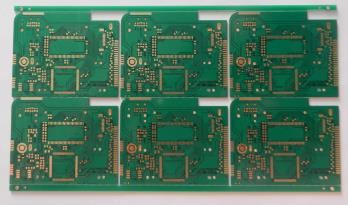The most valuable thing about hardware design introductory learning is the design experience handed down by the predecessors. If you want to become a hardware engineer, the first thing you must master is PCB drawing and design. Here are a few design techniques for everyone.
1. If the designed circuit system contains FPGA devices, the Quartus II software must be used to verify the pin assignments before drawing the schematic. (Some special pins in FPGA cannot be used as ordinary IO).
2. The 4-layer board from top to bottom is: signal plane layer, ground, power, signal plane layer; from top to bottom, the 6-layer board is: signal plane layer, ground, signal inner electric layer, signal inner electric layer, Power and signal plane layer. For boards with 6 layers or more (the advantage is: anti-interference radiation), the internal electric layer wiring is preferred, and the plane layer is not allowed to go. It is forbidden to route the wiring from the ground or power layer (reason: the power layer will be divided, causing parasitic effects).

3. Wiring of multi-power supply system: If the FPGA+DSP system is used as a 6-layer board, there will usually be at least 3.3V+1.2V+1.8V+5V.
3.3V is generally the main power supply, and the power layer is directly laid, and the global power network is easily wired through the vias;
5V may generally be the power input, and only a small area of copper is required. And as thick as possible (you ask me how thick it should be-as thick as possible, the thicker the better);
1.2V and 1.8V are the core power supply (if you directly use the wire connection method, you will encounter great difficulties when facing BGA devices). Try to separate 1.2V and 1.8V during layout, and let 1.2V or 1.8V connect The components are arranged in a compact area and connected by copper.
In short, because the power supply network is spread over the entire PCB, it will be very complicated and long to go around if it is routed. The method of laying copper is a good choice!
4. The wiring between adjacent layers adopts a cross method: it can reduce the electromagnetic interference between parallel wires (for high school and high school), and it is convenient for wiring.
5. What is the isolation method for analog and digital isolation? Separate the devices used for analog signals from those used for digital signals during layout, and then cut across the AD chip!
The analog signal is laid with an analog ground, and the analog ground/analog power supply and the digital power supply are connected at a single point through an inductor/magnetic bead.
6. PCB design based on PCB software can also be regarded as a software development process. Software engineering pays most attention to the idea of "iterative development". I think this idea can also be introduced in PCB design to reduce the probability of PCB errors.
(1) Check the schematic diagram, pay special attention to the power supply and ground of the device (the power supply and ground are the blood of the system, and there should be no negligence);
(2) PCB package drawing (confirm whether the pins in the schematic diagram are wrong);
(3) After confirming the PCB package size one by one, add a verification label and add it to the package library of this design;
(4) Import the netlist, adjust the signal sequence in the schematic diagram while layout (OrCAD component automatic numbering function can no longer be used after layout);
(5) Manual wiring (check the power ground network while cloth, as I said before: the power network uses the copper method, so use less wiring);
In short, the guiding ideology in PCB design is to feed back and correct the schematic diagram while drawing the package layout (considering the correctness of signal connection and the convenience of signal routing).
7. The crystal oscillator is as close as possible to the chip, and there is no wiring under the crystal oscillator, and the network copper skin is laid. Clocks used in many places are wired in a tree-shaped clock tree.
8. The arrangement of the signals on the connector has a great influence on the difficulty of wiring, so it is necessary to adjust the signals on the schematic while wiring (but do not renumber the components).